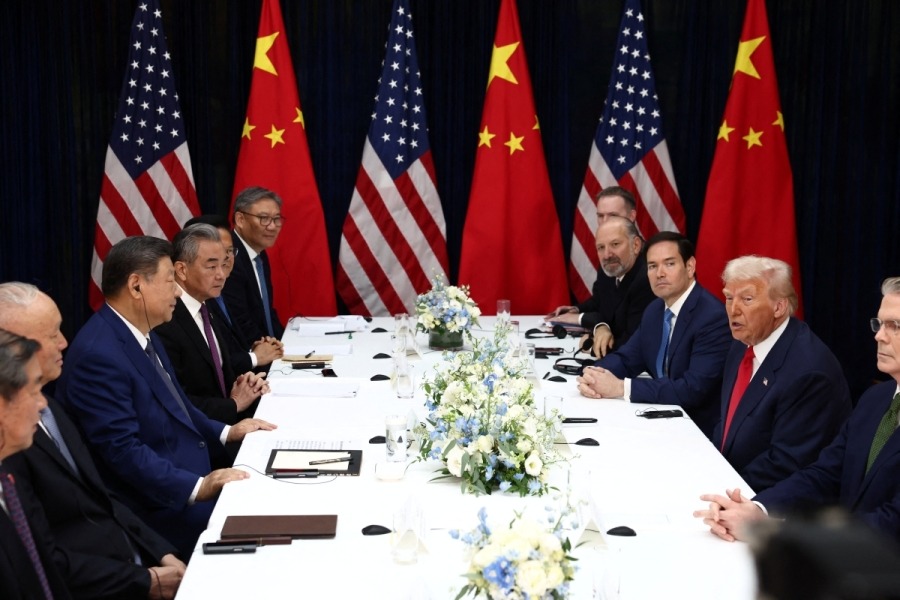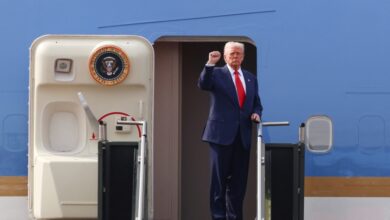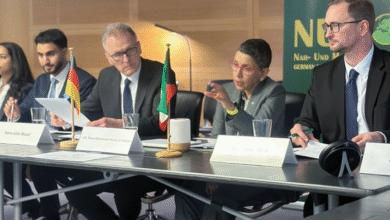
US President Donald Trump met with Chinese President Xi Jinping in South Korea on Thursday for high-level talks aimed at reaching a truce in the ongoing trade war between the world’s two largest economies.
At the start of the meeting, Trump expressed optimism, saying he expected a “successful meeting” with his “strong negotiator” counterpart. He added that a trade agreement with China could potentially be signed the same day.
For his part, Xi emphasized the importance of cooperation despite differences, saying that while the two nations “may not always see eye to eye,” they should strive to remain “partners and friends.”
“China and the United States can share responsibility as two great powers and work together to achieve greater and tangible benefits for both countries and the world,” Xi said.
He noted that trade negotiators had already reached a basic consensus on an agreement, stressing that China’s development goals do not conflict with Trump’s vision of “making America great again.”
According to China’s official Xinhua News Agency, Xi arrived in South Korea early Thursday morning to attend the 32nd informal meeting of Asia-Pacific Economic Cooperation (APEC) leaders and to pay a state visit at the invitation of South Korean President Lee Jae-myung.
Analysts said both sides appear to be seeking a temporary truce rather than a long-term resolution, dw.com reports.
“Both sides were expected to make concessions, which has made outsiders, especially investors, feel more optimistic,” said Dennis Weng, associate professor of political science at Sam Houston State University. “The competition is ongoing, but they don’t want it to trigger an economic collapse.”
Others remain skeptical that a major breakthrough is possible. Bonnie Glaser, managing director of the Indo-Pacific program at the German Marshall Fund, told DW that “there is virtually no overlap in American and Chinese interests.” She noted that limited cooperation might emerge in combating fentanyl trafficking, as Beijing seeks to persuade Trump to lift a 20% tariff tied to China’s role in the trade.
The upcoming meeting marks Trump’s first face-to-face encounter with Xi during his second term. The two leaders have spoken by phone three times this year, most recently in September.
Trump’s return to tariff-driven diplomacy mirrors his first term, when he launched a global trade war targeting multiple countries, with China bearing the brunt. Beijing, wielding significant economic leverage, has since retaliated by halting U.S. soybean purchases—a move that has cost American farmers billions of dollars—and by threatening restrictions on rare earth exports, of which China controls about 70% of global production and over 90% of refining capacity.
Observers say that while the current dynamics recall the 2019 Trump-Xi meeting that followed the first trade war, Beijing’s stance has hardened.
“Xi Jinping feels a lot more confident and is probably willing to push his position more strongly,” said Ja Ian Chong, a political science professor at the National University of Singapore.
Weng added that “Beijing has studied Trump very thoroughly” and is likely using pre-planned concessions as bargaining chips. “China stopped buying soybeans right after Trump took office in January, which shows the whole soybean issue was planned all along,” he said.
Despite the cautious optimism surrounding the APEC meeting, experts believe any breakthrough will likely be limited and tactical, aimed at stabilizing markets rather than redefining the world’s most consequential economic relationship.












